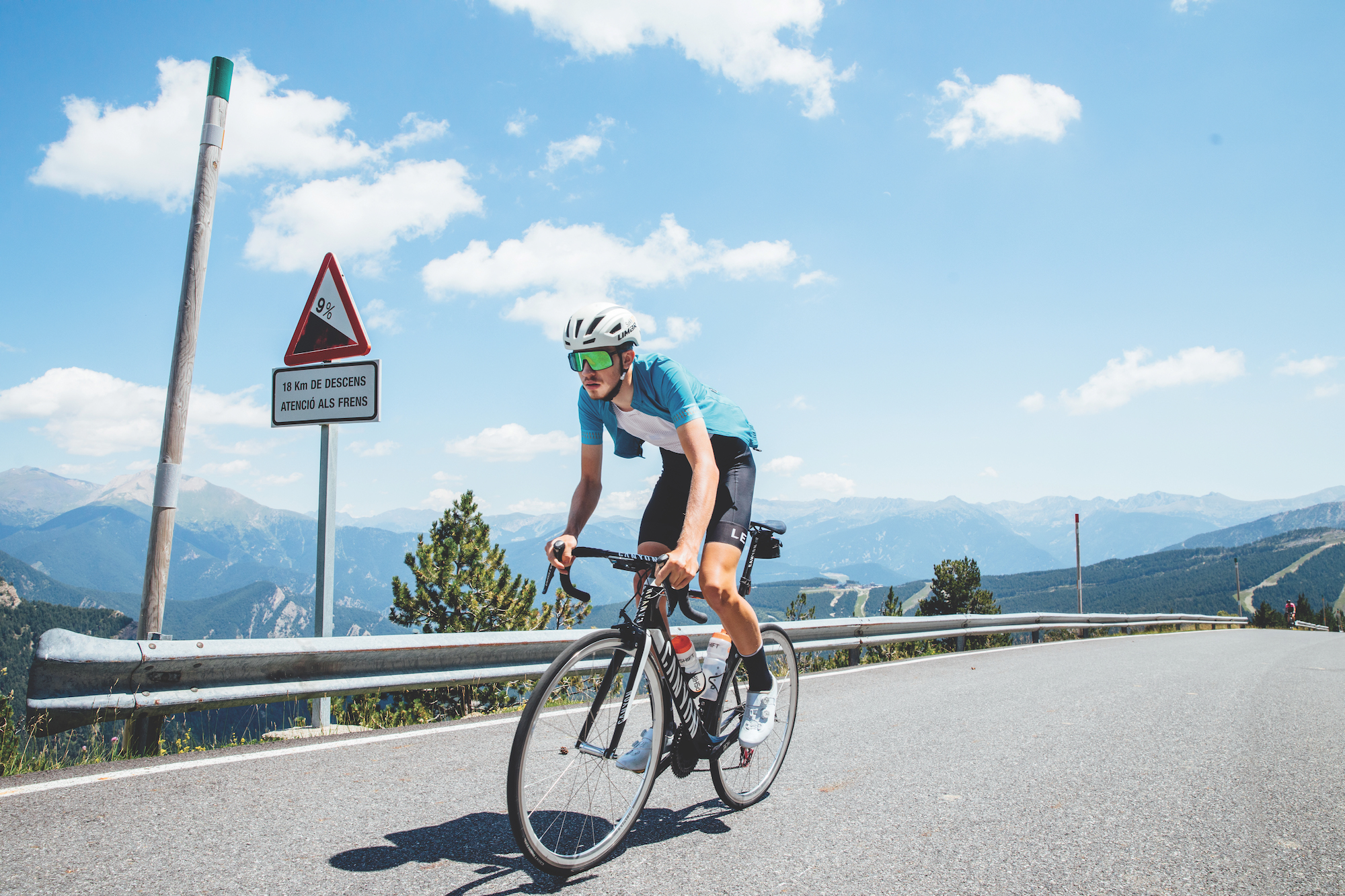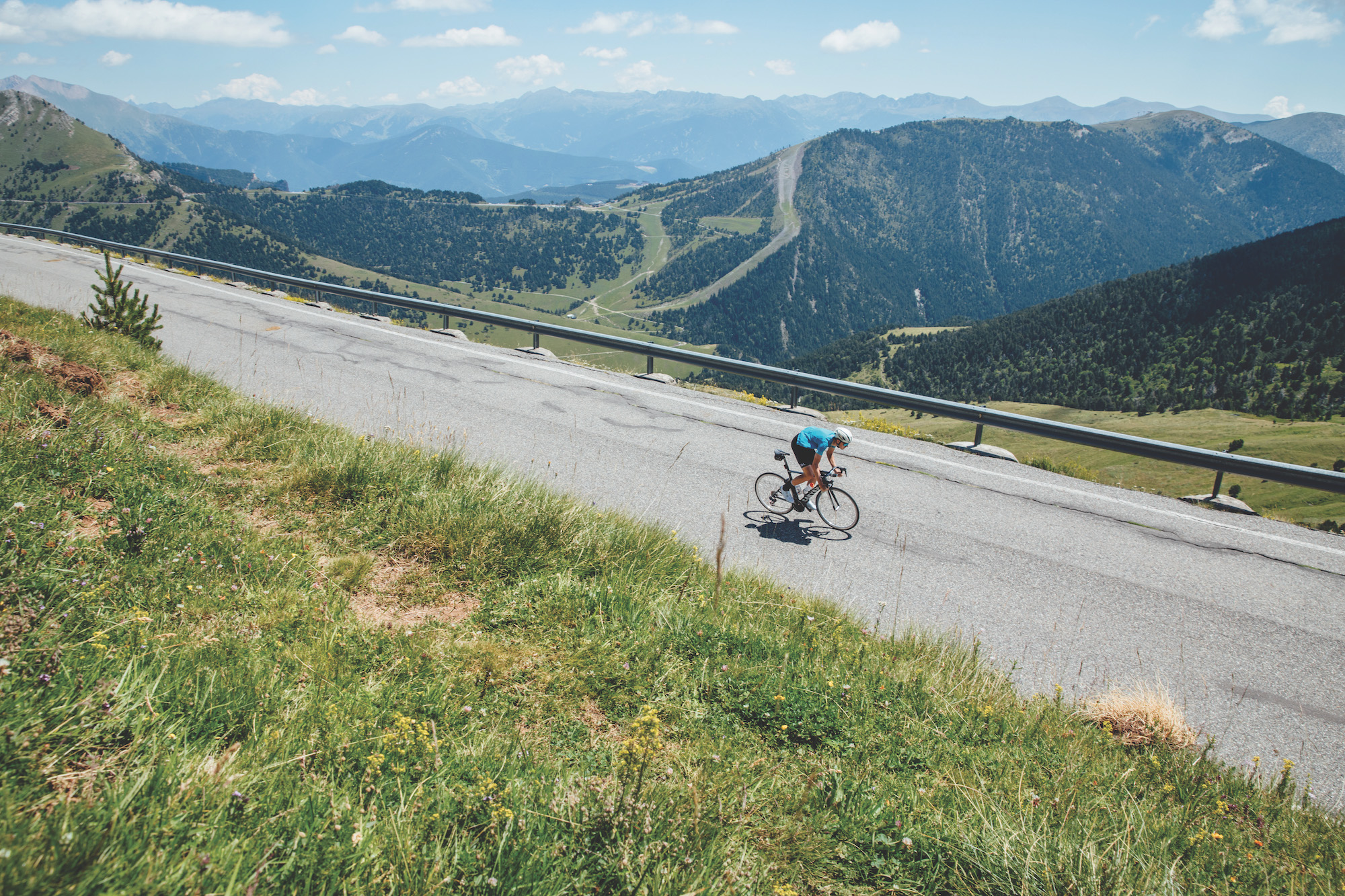There will be blood: How to legally maximise your performance
The blood coursing through our capillaries is fundamental to our fitness. How can understanding it better help us – legally – maximise our cycling performance? Nick Busca and David Bradford investigate

(Daniel Gould)
“Lance, all you need is red blood cells.” In ESPN’s 30 for 30 documentary, Lance Armstrong recalled this snippet of conversation with his doctor Michele Ferrari. While the notorious doper was eager to find yet another way to leapfrog his competitors, his Italian physiologist was insistent that red blood cell (RBC) levels remained the most effective way to boost performance.
CW is ardently opposed to all foul play, but the fundamental importance of blood highlighted by this form of physiological manipulation raises a fascinating question: Are RBCs the most important component in endurance performance? And if so, what do we need to do to make sure our blood is in the best possible (legal) health to support our riding?
Why blood matters
RBCs are blood cells that carry oxygen to the body’s tissues. They contain a protein called haemoglobin (Hb), which binds to oxygen (O2) and delivers it to tissues. At sea level, one molecule of haemoglobin can bind to four molecules of O2 – and this isn’t RBCs’ only function.
“As well as O2 transport, RBCs fulfil a variety of other functions, all of which may improve endurance performance,” says Austrian exercise physiologist Peter Leo.
One of these other functions is helping to regulate blood pH. RBCs transport carbon dioxide (CO2) to the lungs for exhalation and bind hydrogen ions (H+) to haemoglobin; they also take up metabolites, such as lactate released from skeletal muscle cells during high-intensity exercise.
>>> Subscriptions deals for Cycling Weekly magazine
Get The Leadout Newsletter
The latest race content, interviews, features, reviews and expert buying guides, direct to your inbox!
“When exercise intensity goes up, the amount of hydrogen ions increases, and it depends on the buffering mechanism in the body to keep the balance,” says Leo. “When hydrogen ions cannot be buffered by lactate, the pH level in the blood declines, and we are confronted with acidosis. And that’s a problem. Most people think lactate is the bad guy, but in fact it’s a fuel source. It’s hydrogen ions that are the bad guys.”
Haematocrit and hydration
One of the key parameters often cited in conjunction with RBCs is haematocrit – what is it?
“Haematocrit is the proportion, by volume, of the blood that consists of RBCs,” says Leo. “It’s expressed as a percentage. For example, a haematocrit of 40 per cent means there are 40 millilitres of RBCs in 100 millilitres of blood.”
Trained endurance athletes may have a lower-than-average haematocrit value, which is sometimes called ‘sports anemia’. This is not anemia in a clinical sense, but rather a lower relative value connected to an increased volume of blood plasma (the fluid content of the blood) – the result of training. Compared to sedentary individuals, athletes have a greater total mass of RBCs, despite a lower haematocrit.
Sludgy blood
If the haematocrit is more than 50 per cent, it means the majority of blood is composed of viscous parts, which can lead to dangerous clotting. In the Nineties, when tests to detect illegal EPO use didn’t yet exist, haematocrit levels were seen as an indirect form of detection. Marco Pantani was disqualified from the 1999 Giro for his haematocrit being higher than 50 – a measure intended to protect health.
Illegal EPO use isn’t the only thing that can make your blood thicker – dehydration has a similar effect, reducing blood plasma volume.
“The thicker and more concentrated your blood becomes, the harder it is for your cardiovascular system to work and maintain blood pressure,” says Leo. “When you’re dehydrated, your body works harder – just like when you’re exercising intensely, or experiencing heat stress. The risks of exhaustion, overheating or collapse increase.”
Ideally you want optimum haematocrit and haemoglobin ratios, together with plentiful blood volume to ensure high cardiac output. This is the primary driver for VO2max and endurance performance parameters.
The iron link
One of the essential elements of blood and of the production of RBCs is iron, a mineral that is a critical component of haemoglobin. Almost 70 per cent of our body’s iron is found in RBCs and muscle cells’ protein myoglobin; 25 per cent is stored as ferritin, and five to six per cent contributes to other respiratory and energy production mechanisms. At a cellular level, iron plays a role in the function of mitochondria (the ‘powerhouse’ of our cells), but it’s also crucial for immune functioning and cognitive processing.

Sports endocrinologist Dr Nicky Keay explains: “To make a decent amount of RBCs and good haemoglobin, you need three hematinics [nutrients]: iron, vitamin B12, and folate. But it’s the iron component that’s the most important, because after all haemoglobin has a molecule of iron right in the centre of its structure. That’s why iron is so crucial to have a good oxygen-carrying capacity.”
A lack of iron may result in lowered performance because of the limited capacity of binding O2 with haemoglobin. It can also negatively influence your overall health – including bone health and hormones. Signs of deficiency include a persistent sense of fatigue, shortness of breath, dizziness, and difficulty recovering from training. Blood loss, decreased RBC production and underlying health problems may cause anemia.
Relative energy deficiency (REDs) from a limited diet and extreme physical stress can cause iron deficiency too. Blood loss remains the most common cause. In women, genitourinary blood loss often accounts for increased iron requirements; some oral contraceptives reduce menstrual blood loss, while some intrauterine devices increase it.
Keay suggests getting your blood tested at least twice a year, ideally at the start of the off-season and then again before racing commences. It’s essential to address any deficiency that may be affecting your performance, primarily as a way to take care of your health. If you order a home blood test kit from a private provider, make sure you get professional help in interpreting the results. Keay is chief medical officer for Forth Edge, where her analysis services come as part of the package.
As well as iron, the other vital markers you should check with a blood test are B12, folate, cortisol, creatine kinase, testosterone, oestrogen, thyroid hormones, urea, white cells, lymphocytes, and vitamin levels. The blood sample must be collected on a rest day, in the morning, when you’re well-hydrated and not feeling unwell.
Blood food
The primary source of iron remains the food you eat. You only need to take supplements or get injections (a last resort) if your level is low – and following the recommendation of a professional.
“Red meat is generally a good source of iron, since it contains heme iron, which is better absorbed than the iron found in plant foods [non-heme iron],” says Peter Peeling, research director for the Western Australian Institute of Sport. “This is a potential reason why vegetarian athletes might struggle a little more with obtaining adequate iron in their diet.”
What is the best food for iron absorption for meat-eaters? If you can face it, chicken liver: it contains 11mg iron per 100g of the liver and an estimated absorption of one milligram per portion. For vegetarian and vegan athletes, the best source of iron is partially dried figs and apricots (three to four milligrams per 100 grams), but only around 0.2mg per portion is absorbed.
However, it isn’t enough just to consume iron-rich foods, since various factors influence the absorption of iron – you need the right combination of foods. “Inhibitors include phytates – found in whole-grain cereals, legumes, nuts, and seeds; polyphenols and phenolic compounds – herbal and non-herbal tea, coffee, red wine, and chocolate; calcium – yoghurt, milk, and cheese; supplements and other minerals, zinc, and manganese,” adds Peeling.
Enhancers include vitamin C and ascorbic acid – oranges, kiwi, grapefruit, broccoli, Brussels sprouts, tomatoes; carotenoids – pumpkin, carrots, grapefruits, apricots; and fermented foods – sauerkraut, kimchi, miso. Cooking your food, instead of consuming it raw, reduces the amount of phytates and thereby enhances iron absorption.
“Try to have higher iron-containing meals or take supplements in the morning, since the body’s iron regulatory hormone hepcidin tends to be higher in the afternoon,” suggests Peeling. Hepcidin levels are also higher after exercise, for around three hours after a workout. If you don’t tolerate iron supplements – they can cause stomach distress – Peeling suggests taking them every other day. Finally, he urges cyclists to take professional advice on iron.
“I cannot stress this enough,” Peeling says. “Taking iron supplements or getting an infusion when it is not needed can be detrimental to your health. When it comes to iron, more is definitely not better, and each individual is different.”
The effects of altitude
As we have seen, training adaptations bestow us cyclists with superior blood. A well-trained bike rider has up to 40 per cent greater blood volume than an untrained person, and yet we still want more. There is one way to trick your body into producing more red blood cells – without cheating. That is, by exposing yourself to altitudes of above 1,800m, which triggers the production of natural EPO and, in turn, more red blood cells (usually measured as haemoglobin mass), as well as non-blood-related changes such as enhanced mitochondrial gene expression and muscle buffering capacity.
Oxygen makes up 21 per cent of the air we breathe, but at altitude there is less barometric pressure, so the air is thinner – the proportion of oxygen is the same, but the molecules are fewer and farther between. Over time, your body adapts to this scarcity (hypoxia) by using oxygen more efficiently – primarily by boosting your red blood cell count, which can ultimately improve (sea level) endurance performance by up to five per cent. According to the research, those who spend a prolonged time at altitude can expect a haemoglobin mass increase of around one per cent per 100 hours of exposure, up to a ceiling of around six per cent. Note the hefty time requirement – it’s a mistake to regard altitude training as a quick, easy or straightforward way to make fitness gains.
Psychological acclimatisation: A few rides over high mountain passes during your annual overseas training camp won’t do much to your blood, but will get you used to the feeling of riding at altitude. This is a worthwhile part of your preparation if you’re targeting an event that features high altitude sections. But if you’re looking for blood-based gains, you need to get serious about altitude.

‘Live high, train high’: One option is to base yourself at a moderate altitude of 1,800-2,500m, living and training high, for two to four weeks at a time. The evidence for this form of altitude training is quite mixed, not least because it’s hard to separate out the effects of the training from the effects of the altitude. Another problem is training is harder at altitude – VO2 max drops by around 6.3 per cent for every 1,000m you climb – so there’s an added risk of overtraining or failing to hit your optimal intensities.
‘Live high, train low’: Living at altitude, then dropping down to sea level for your training has been shown to be effective, but is thought to require at least four weeks, provided you spend all day bar training time at over 2,000m. Which is hardly very practical for most of us.
‘Live low, train high’: This is where athletes live at regular low altitude, but undertake hypoxic training sessions two to five times per week either in an altitude chamber or by using a mask that delivers hypoxic air. Though this form of altitude training may yield physiological benefits, it is thought insufficient to induce an increase in red blood cells.
Avoiding the pitfalls: Pro cyclists and athletes tend to combine both of the above approaches over the course of the year, timed to suit their race preparation. In this way, it is likely that they accrue benefits from altitude gradually over many years – all the while guided and monitored by exercise physiologists. None of which is very realistic for most amateur riders. Adding to the difficulty, altitude can cause sleep disturbance, immune suppression, iron deficiency, dehydration and reduced appetite, so it’s harder to stay in tip-top condition for training. If you’re going to try it, you need to be very serious about your preparation and planning, and allow two to three days of acclimatisation.
Given all of the above, is altitude training really worth the effort (and risk) for an amateur rider whose only access to high mountains is during a two-week holiday from work?
“It may be worth it, yes,” says Gareth Turner, altitude specialist at the English Institute of Sport. “Some research has shown that amateur riders have greater scope for improvement – whereas an elite rider’s physiological capacity is already very close to their optimum, an amateur has greater unexplored potential to tap into by applying a different stress or new stimulus.”
Going to altitude for shorter periods is not solely about blood gains.
“Camps of a week or two may not enhance RBCs,” cautions Turner, “but some non-haematological adaptations, such as enhanced muscle buffering capacity, increased mitochondria and capillarisation of the muscle can occur.”
>>> Cycling Weekly is available on your Smart phone, tablet and desktop
Simulated altitude: More practical than travelling to stay at altitude for weeks is using a simulated altitude tent or chamber (see box). However, simulated altitude is not the same as real altitude. A tent set up at home does not produce thinner air, it simply replaces some of the oxygen with nitrogen – reducing the percentage of oxygen you’re breathing. Some scientists believe that makes it less effective at inducing physiological changes. What’s more, sleep quality may be affected, not least by the hum of the generator – unless you’re able to situate it in a different room and don’t mind turning your home into a laboratory. Even then, you’d need to use the tent for several weeks to see any significant gain.
Unfair advantage?
Isn’t using an altitude tent to change your blood profile uncomfortably similar to doping? Legislators in Italy and Norway decided that yes, it is, and banned the practice.
“I suppose you could call it a form of financial doping,” says Harvey Galvin, performance scientist with altitude training specialist Sporting Edge, “as you’re using a technology that some of your rivals cannot afford. Then again, the same applies to expensive components on your bike, or paying for a nutritionist or coach – which may result in bigger gains.”
Unlike doping, altitude offers no guaranteed performance boost.
“Research has been done comparing blood doping and altitude,” continues Galvin. “Blood doping induces a similar response in all, whereas with altitude there is a high degree of variability.”
Three miles high - Campenaerts’ venture into the death zone
Back in June, it was reported that current Hour record holder Victor Campenaerts was sleeping at an extreme simulated altitude of 4,700m, and spending up to an hour at 10,000m – above the so-called ‘death zone’. For most people, this level of hypoxia would be unsafe, but according to sports physician Ruud Van Thienen, Campenaerts has oxygen saturation levels at 4,700m that other people would have at around 2,500m.
“You and I can’t keep that up for a minute,” said Van Thienen, “so don’t do this if you are not professionally guided, because you risk becoming deathly ill. ”
Are these extreme levels of altitude really a good idea, even for someone with exceptional altitude tolerance?
“This is known as intermittent hypoxic exposure,” says physiologist Harvey Galvin. “Really high doses, but usually for just five to seven minutes at a time with the mask on. The theory is that it starts the signalling cascade for your body to start adapting to altitude.”
Does it work?
“Theoretically yes, there is some benefit, but this is the first report I’ve heard of a high-performance athlete trying it.”
This feature originally appeared in the print edition of Cycling Weekly, on sale in newsagents and supermarkets, priced £3.25.

Thank you for reading 20 articles this month* Join now for unlimited access
Enjoy your first month for just £1 / $1 / €1
*Read 5 free articles per month without a subscription

Join now for unlimited access
Try first month for just £1 / $1 / €1
Nick Busca is a freelance cycling and triathlon journalist. He is also a certified triathlon coach and personal trainer.
-
 'It took everything' - Puck Pieterse outclimbs Demi Vollering to win La Flèche Wallonne
'It took everything' - Puck Pieterse outclimbs Demi Vollering to win La Flèche WallonneDutch 22-year-old shows Classics pedigree with first one-day victory
By Tom Davidson
-
 Tadej Pogačar flies to dominant victory at La Flèche Wallonne
Tadej Pogačar flies to dominant victory at La Flèche WallonneSlovenian takes second win at Belgian classic ahead of Kévin Vauquelin and Tom Pidcock
By Tom Thewlis